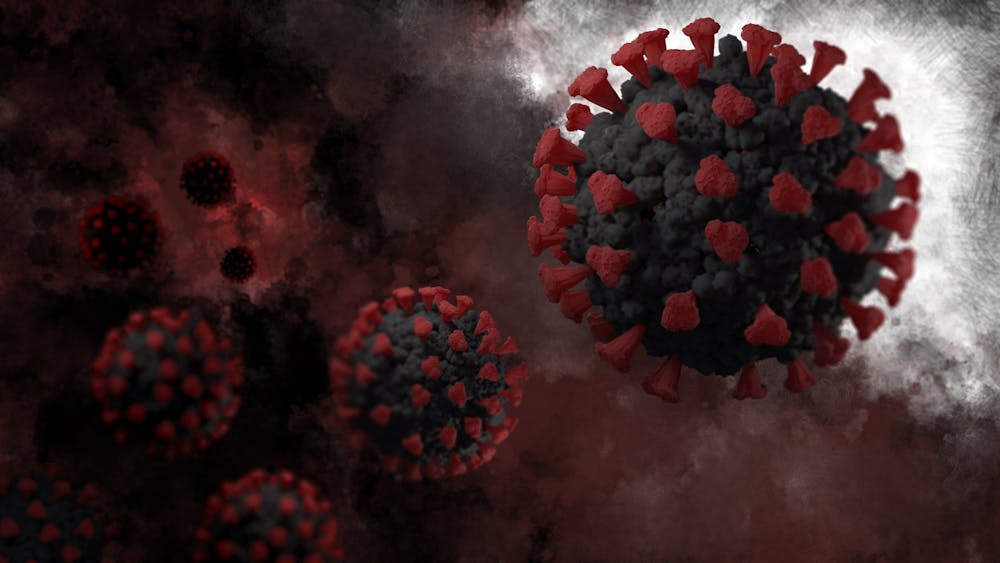
There are still many unknowns surrounding long COVID — also called long-haul COVID, post-acute COVID-19, post-acute sequelae of SARS CoV-2 infection, long-term effects of COVID, chronic COVID, post-COVID conditions (PCC) and post-COVID-19.
The World Health Organization (WHO) defines post-COVID-19 as a condition that “occurs in individuals with a history of probable or confirmed SARS CoV-2 infection, usually three months from the onset of COVID-19 with symptoms that last for at least two months and cannot be explained by an alternative diagnosis.” Common symptoms include fatigue, shortness of breath, cognitive dysfunction and a general impact on everyday functioning.
Pediatric patients, who experience many of the same physiological concerns as adult patients, but also have the shared experience of school. A great deal can be learned from long COVID in younger populations, as their performance and activities in school often result in the identification of certain symptoms.
Although the WHO and the Centers for Disease Control and Prevention (CDC) established concrete definitions, medical providers who treat patients with PCC characterize the condition differently.
In an interview with The News-Letter, Dr. Amanda Morrow, an assistant professor at the Johns Hopkins Department of Physical Medicine and Rehabilitation and rehabilitative physician at Kennedy Krieger Institute, where she is a member of the Pediatric Post-COVID-19 Rehabilitation Clinic interdisciplinary team, explained long COVID can be described as persistent symptoms after COVID infection lasting at least four weeks.
“[Long COVID] is really a constellation of persisting new or relapsing-remitting symptoms after initial COVID infection,” she said.
According to the CDC, there are several approaches to estimating how many people experience PCC, resulting in varying estimates of the proportion of people suffer from it. Based on CDC studies, 13.3% of patients experience PCC at one month or longer after infection, 2.5% of patients at three months or longer (based on self-reporting); this number increases to 30% at six months among hospitalized patients.
Given its prevalence, spreading awareness and keeping the public informed about long COVID is essential. However, this is not an initiative the medical community can accomplish alone. When working to address long COVID’s potential impact on pediatric patients, communication with school systems and educators is critical.
Morrow explained the role that educators with increased awareness about long COVID can play in identifying students at risk and facilitating communication with families.
“It’s really important for us to be communicating with the school systems and for schools and educators to be knowledgeable about long COVID because it really can affect children’s ability to participate in school,“ she said. “[Schools can even] identify at-risk kids who are struggling academically or just not feeling themselves.”
Since long COVID often affects multiple aspects of a patient’s health, coordination of care between medical providers and specialists is essential. At Kennedy Krieger Institute’s Pediatric Post-COVID-19 Rehabilitation Clinic, each patient is evaluated by the clinic’s interdisciplinary team in order to determine the rehabilitative care necessary for recovery and a personalized treatment plan to meet the patient’s specific needs is developed.
Morrow described how these evaluations take place stressing the importance of planning for a return to an educational setting.
“We work very closely with a neuropsychology team, that performs cognitive testing on our patients and those who are complaining of cognitive concerns,“ she said. “[Patients] also talk to an education specialist... and come up with a school reintegration plan or if there are any accommodations needed in school to help them make it through the school day and limit the number of symptoms they’re having at school.”
Morrow also elaborated on the coordination of patient care between specialists and medical providers during the patient’s clinic visit and afterward.
“We’re all in close communication, making sure we’re following up even behind the scenes. A lot of work goes on behind the scenes, even outside of the clinic visit,“ she said. “There’re other sub-specialists at Johns Hopkins we’re in close communication with for other underlying concerns, like pulmonary or rheumatologic issues. A lot of [post-COVID] is unknown, and we’re all learning together, so it’s really nice to be able to talk with other specialists too if we have a more difficult case, just to get everyone’s thoughts on what’s going on.”
Recognizing the holes in knowledge, the American Academy of Physical Medicine (AAPM) and Rehabilitation recently published guidance statements focusing on the assessment and treatment of fatigue, cardiovascular complications, breathing discomfort and respiratory sequelae and cognitive symptoms caused by post-COVID.
Morrow, a member of the national AAPM collaboration, discussed the development of these guidance statements and other guidance statements to come, further emphasizing the power of collaboration within the medical community.
“We have a guidance statement coming out for pediatric management and pediatric long COVID. It was a team effort with different clinics across the country and different subspecialists, where we go through those [affected] organ systems,“ she said. “There are a lot of doctors and providers, addressing symptoms based on an overall approach, then looking at specific organ complaints involving specific organ systems and making sure that we’re ruling out any other medical conditions that have known treatments.”
Morrow also underscored the significance of combining individualized patient care with available interventions that have proven effective.
“Everyone’s [treatment] is individual based on how they’re feeling, but our treatment often involves some initial lifestyle interventions: making sure patients are getting adequate sleep, getting into a regular daytime routine, limiting time spent in bed, adequate hydration and nutrition,“ she said. “There’s evidence these types of lifestyle interventions can help with things like headaches, fatigue or mental health concerns.”
Deanna Rahman is a senior from Westchester, N.Y. majoring in Medicine, Science and the Humanities and minoring in Anthropology and Spanish for the Professions. “In for the Long Haul” aims to investigate and increase awareness about COVID-19’s impact on physical health, mental and emotional well-being and the functioning of society as a whole.
Editor’s note: A previous version of this article incorrectly abbreviated Kennedy Krieger Institute as KKI.
The News-Letter regrets this error.





